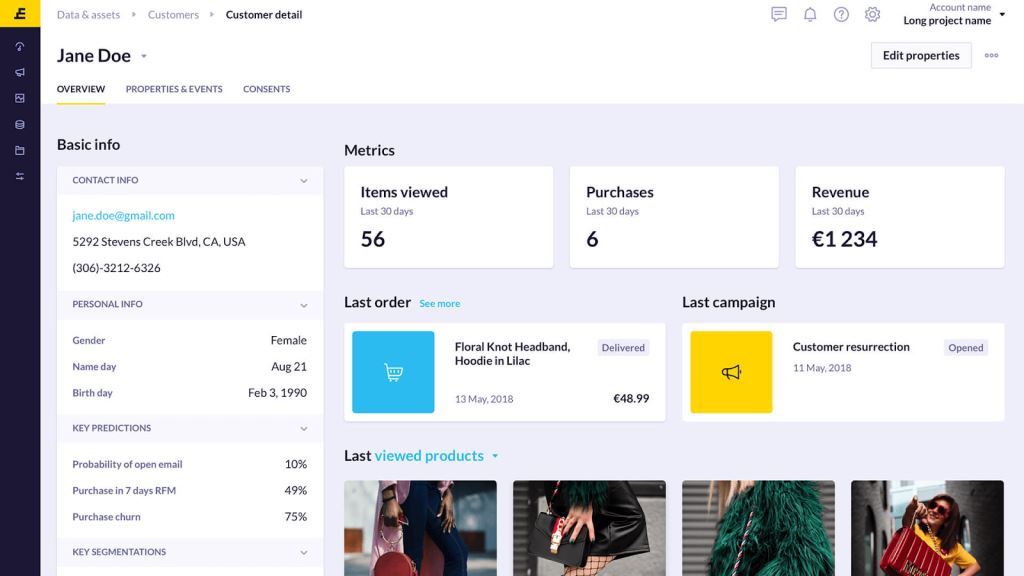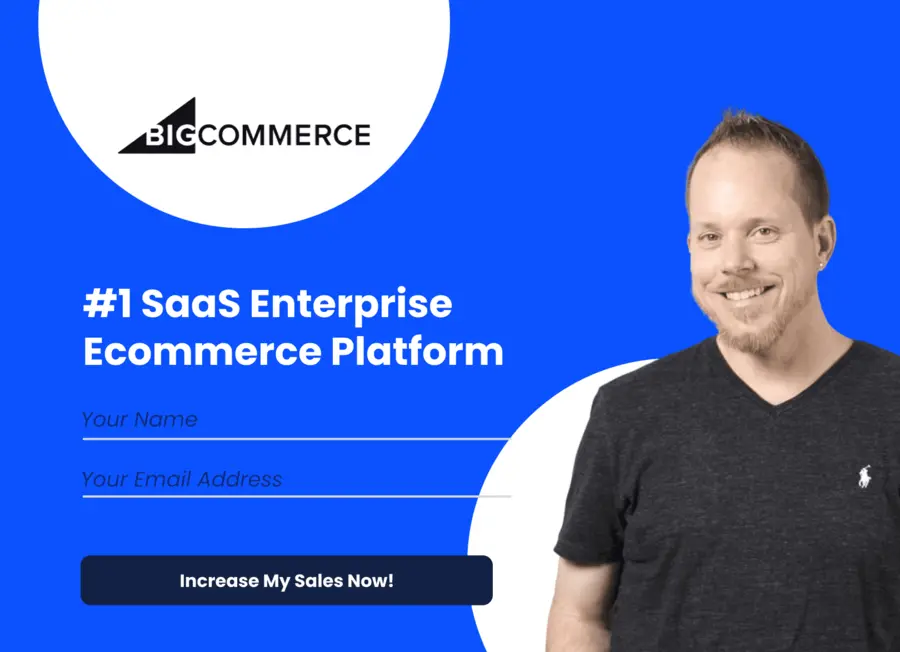Cookieless ecommerce is a trending topic in the field of online marketing and advertising.
While advertisers and ecommerce marketers are worried about a cookieless future, there are those that can’t stop listing the benefits of cookieless ecommerce.
What is all this fuss about? What is cookieless ecommerce and why are marketers/advertisers suddenly talking about it?
In this post, you will find the answers to all these questions. You will also learn how to navigate a cookieless ecommerce future as a marketer.
Excited to learn more about cookieless ecommerce?
Keep reading.
Table of Contents
What is Cookieless Ecommerce?
Before we talk about cookieless ecommerce, you must first understand the different types of cookies and how marketers and advertisers use them.
Cookies are small text-based files that websites store on a user’s device to track their activity. They use them to understand an anonymous user’s behavior and preferences (by tracking purchase history and previous actions) and show targeted ads to them.
There are three main types of cookies:
- First-Party Cookies: These are generated by the websites that an individual is using and are mostly safe.
- Third-Party Cookies: These are the cookies that are generated by the websites that a person is not using and can be a cause of concern. 3P cookies are usually related to ads on a page that a person might be viewing and can be stored even if they don’t click on the ads.
- Zombie Cookies: These are third-party cookies that get permanently stored in a user’s device, even if they have chosen not to install cookies.
Are all cookies bad?
While most cookies are harmless, some cookies (like zombie cookies) can pose a threat to a user’s privacy and security. Hackers can gain access to cookie data and can pose a security threat.
Cookieless ecommerce or tracking refers to the practice of using scripts and other ways to track online user behavior and save the data on a remote server instead of users’ devices. This way, you can still get all the important web analytics data while respecting the privacy of users.
But, why are marketers suddenly concerned about cookies and switching to cookieless ecommerce?
Find the answer in the next section.
Why Do Marketers Need to Switch to Cookieless Ecommerce?
There has been a concern about the use of third-party cookies and the fact that they violate users’ privacy, for several years. These concerns prompted all major search engines to block the use of third-party cookies and provide a safer browsing experience to their users.
Both Google and Apple have started preventing the use of third-party (3P) cookies and plan to completely phase it out soon. Other companies are also following suit and it seems like the future is going cookieless.
But, how can marketers navigate a cookieless future?
Find that out in the next section.
How Can Marketers Prepare for Cookieless Ecommerce?
The ban on the use of third-party cookies can be a blessing in disguise for marketers. It will, after all, encourage you to switch to more ethical data-collection practices and earn the trust of consumers.
Want to know the best part?
Any company or business that makes the switch early can earn more goodwill as they choose to go ethical, rather than being forced to. So, before you are forced to adapt to a cookieless future, proactively prepare yourself for it.
Here are some ways in which you can switch to cookieless ecommerce or tracking and prepare for a cookieless future.
1. Improve First-Party Data Collection
As mentioned earlier, only 3P cookies are considered bad and are being phased out. This means that you can still use first-party cookies to collect valuable user data.
In light of the current situation, it is time that you focus more on this and improve your first-party data collection. Implement processes that allow for more granular data collection and start early to get the most out of it.
Also, make sure that your first-party data collection is completely compliant and foolproof. Make sure that you have a good cookie consent management solution to achieve that.
2. Explore Second-Party Data Options
Third-party cookies, though useful, are not the only way to collect and use user data.
So, explore other options to gather the same data and create targeted marketing campaigns. One great option is to leverage second-party data from publishers and tech leaders like Google, Facebook, etc.
These companies collect tons of user data that can help you create highly targeted marketing campaigns. You can gain access to this data by using their advertising or media buying platforms that automatically use this valuable data when you create your advertising campaigns.
3. Leverage Other Forms of Personalization
Let me set the record straight:
Cookies are not the only way to get insights into online user behavior or create targeted personalized campaigns.
You can opt for other forms of personalized marketing like geo-targeting and moment marketing. These forms of marketing are highly effective as they target consumers with personalized marketing communications in real-time.
You can also use contextual advertising to show ads to people based on what they are currently looking at, instead of past purchases. This ad targeting technology does not require third-party cookies and is an effective way to run targeted digital advertising campaigns.
4. Invest in a Customer Data Platform
Now that we know that you can’t rely on third-party data, it becomes more important to take control of your owned customer data. This is where a customer data platform (CDP) can help you.
What is a customer data platform and why do you need it?
A customer data platform allows you to collect, organize, and use all your customer data from multiple sources. A good customer data platform like Exponea (now Bloomreach) can unify all your customer data into a single dashboard from which you can easily analyze and use it for your campaigns.
If you are going to rely mainly on your own customer data, you need to organize and use it in the best way possible. That is exactly what a customer data platform offers and that is why it is a must in the world of cookieless ecommerce (tracking).
The most useful feature of a CDP like Exponea is the single customer view that shows you a detailed profile and user demographics of each customer. You can use this to create customer personas, segment customers, and create highly targeted marketing and sales campaigns.
Image via Exponea (now Bloomreach)
So, if you have never used a customer data platform before, it’s time that you consider investing in one.
FAQs
Q1. What is cookieless ecommerce?
A. Ecommerce companies/brands and advertisers rely heavily on third-party cookies to personalize their sales and marketing campaigns. Cookieless ecommerce or tracking refers to the practice of not using third-party cookies and switching to other forms of data collection.
Q2. How will ecommerce function on a cookieless web?
A. First, you need to identify the gaps that going cookieless will create and then fill those gaps by using other technologies and solutions.
Ecommerce markets and advertisers will have to rely on other forms of data collection and personalization for their campaigns in a cookieless world. For example, you can run contextual ads or rely on geo-targeting.
Q3. What do cookies mean on websites?
A. Cookies are text files that collect user insights and are stored on users’ laptops and mobile devices. Check the post above for more information on different types of cookies.
Q4. What are the benefits of using cookieless ecommerce or tracking?
A. Cookieless ecommerce or tracking is a safe way of collecting and using user information without violating their data privacy. Cookieless commerce helps build customer trust and respects people’s privacy by maintaining data transparency and following ethical data collection practices.
Q5. Is it safe to accept cookies from a website?
A. When you use a site and it asks for permission, it is usually to use first-party cookies, which are perfectly safe. It is the third-party cookies (which are usually related to ads on a page) that are a cause for concern.
Q6. Why should marketers prepare for cookieless ecommerce?
A. Google, the biggest search engine (and Chrome the biggest browser), has announced that it will completely block the use of third-party cookies by 2022. Other search engines are also blocking third-party cookies and taking measures to ensure user privacy and safety.
Given that third-party cookies may be obsolete soon, it is important for any company to switch to other ways of data collection to create targeted marketing campaigns. That is why marketers need to move to cookieless commerce early and prepare for the new, cookieless world.
Q7. What does Google Analytics use cookies for?
A. Google Analytics uses cookies to track user behavior and interactions on a website. All web analytics platforms or software solutions use cookies to track and analyze user behavior on websites.
Q8. Are cookies a security risk?
A. Most cookies are harmless, but some third-party cookies can potentially pose a security risk. Cookies can, for example, be hijacked by an attacker and used to impersonate a user. So, use only first-party cookies for your company/business. And do so only after getting user consent to maintain transparency. And, check your browser settings to manage cookies.
Ready to Navigate a Cookieless World?
Third-party cookies are a thing of the past and you can’t rely on them anymore. You need better and more ethical ways to gather customer data and create personalized campaigns.
Use the tips mentioned above to navigate your way in a cookieless ecommerce world. Remember, the sooner you switch to cookieless ecommerce, the better it will be for you in the long run.
Ready to make the switch to cookieless ecommerce? All the best!




Related Articles
11 Best Ecommerce Platforms to Set Up an Online Store
Top B2B Ecommerce Platforms for 2024
How to Build an Ecommerce Website in 9 Easy Steps
11 Best Ecommerce Platforms for Small Businesses in 2024
The World’s Top Ecommerce Companies (2024 List)
25 Best Ecommerce Tools to Grow Your Business in 2024